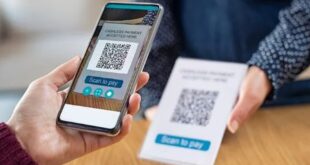Robot salespeople, drone delivery, direct-to-store ordering from a smart home-these technologies will be commonplace for us someday.
We haven’t waited for that yet, but there are other e-commerce tools that used to seem futuristic. They help expand sales, automate processes, and attract and retain customers.
1. Smart product selections
Many online stores offer customers recommended products in a selection. But usually these are abstract items from viewing categories or previous purchases analogues. To replace such lists come smart algorithms. They resemble the ones that already work in social networks and try to select the most interesting content to keep users on the site.
In e-commerce, their job is to offer the most attractive products. Machine learning and big data will make recommendations truly personal: artificial intelligence will analyze information about the client, his interests, when and what purchases kind he makes, in what price category. As a result, the person will get products a selection that are likely to interest him.
With the help of such algorithms, the store will not only increase sales, but also increase customer satisfaction. And in the future, the AI will surely learn to adapt the product card to the customer. From all the information, the robot will choose the one that is closest to the customer and form a customized description.
2. Flexible cloud infrastructure
Cloud services cannot be called a novelty, although in many markets they began to develop not so long ago. However, the main trend in e-commerce is not clouds per se, but a flexible, easily scalable cloud infrastructure.
It allows for problem-free expansion: permanently or temporarily, when needed (during the high demand season or when discounts are announced). For example, Alibaba uses additional capacity on promotions in November.
At 2021, the order number at the peak reached 583 thousand per second, and it was the infrastructure temporary expansion that helped cope with such a flow. Of course, few online stores in the world can come close to Alibaba’s records, but on sale days the workload increases for all retailers.
Around the world, the transaction number during Black Friday on average 530% more than on a normal Friday, and the turnover increases by 2-4 times. If you’re not prepared, the site can “fall down,” customers will remain dissatisfied, sales will be less than expected.
However, it is not rational to buy “extra” capacity on a permanent basis with the periodic promotions expectation – you will have to overpay for something that is used several times a year. The problem is solved by flexible infrastructure.
Another cloud technology advantage is that the customer spends minimal time on setting up and maintaining programs or equipment.
3. Easy payment
Customers appreciate technologies that can make paying for goods easier. For example, the developing area’s one is BNPL services (Buy Now, Pay Later). They allow you to buy goods and pay for them in installments later, over time a fairly short period.
The service is usually free or available for a small fee. This tool is easier than installments and even more so a loan: the buyer does not need to go to the bank, enter into additional contracts, pay interest.
BNPL-service can be used directly in the store, literally before the payment
On the foreign markets, companies a number already offers BNPL services. The largest, Klarna, has 90 million active users who perform 2 million transactions a day.
Many stores and customers are only just getting acquainted with this possibility, but those who have done so praise the service. It helps to store increase conversion rates and average checkout, reduce the abandoned carts number, and increase audience loyalty.
Customers, in turn, appreciate the simplicity and convenience.
4. Augmented reality for product fitting
The main obstacles to one when buying clothes and shoes online is the inability to tell in advance whether the purchase will fit and how it will look.
Augmented reality technology solves this problem: now you can see the product not on an abstract mannequin, but directly on yourself.
AI-enabled programs can think, learn, and act in particular situations as humans do. Goodstyle is a multi-brand virtual fitting room, whose algorithms are implemented using a neural network. With the help of the mobile app, the user can not only try on things virtually, but also combine items, create a complete look and manage a virtual wardrobe. It gives the virtual fitting new experience and increases your online shopping satisfaction. The application is ideal for those who don’t have time for offline shopping.
With a mobile application help, a person can find his individual look by combining all items in app, personal virtual dressing room. This is a new level, a virtual stylist level, when it is not a person who advises, but a neural network.
5. Streamlined logistics and delivery
Customers want to get their orders here and now, or at least as quickly as possible. This requires well-functioning logistics. Artificial intelligence will analyze the data on sales and tell the retailer when and what goods will be bought.
Thus, the online store will be able to build stocks in the warehouse in advance and think about delivery
For example, Amazon uses the anticipatory logistics concept – a neural network calculates when the user makes a purchase, and even before the order, the products are sent to the nearest hub. Delivery by drones and ground robots is also gradually developing. Aerial drones are especially useful in hard-to-reach regions. So far, such technologies are not used en masse, but they will definitely develop.
6. Smart assistants
Chatbots are getting smarter, and businesses are using them more and more. Last year, the request number for their creation worldwide increased by 17%. At the same time, the voice-activated robotic interlocutors dynamics are much higher – a 4-fold increase.
Such intelligent assistants will help with selection, advise, process the order, remind about delivery and coordinate changes. It is better if the voice assistant not only gives a verbal answer, but also displays information and, of course, photos. Such features are convenient for the seller and interesting for the buyers.
 Newspatrolling.com News cum Content Syndication Portal Online
Newspatrolling.com News cum Content Syndication Portal Online







